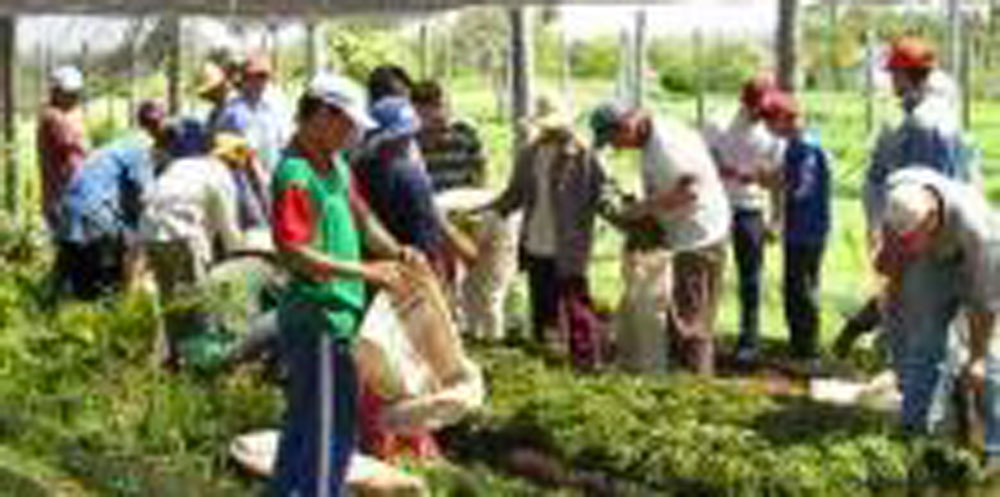
About the Project
This project is one of the 2009 WISE Awards winners.
A “good” education is considered one of the best routes out of poverty, but in most developing countries technical/vocational education is neither good nor readily available to young people from chronically poor families, making it difficult to break the cycle of poverty. Two key problems are: 1) the mismatch between the education students receive and the skills they need to earn a decent living and 2) schools’ chronic shortage of funds due to inadequate public subsidies and the lack of other support.
The Financially Sustainable School model, developed by Fundación Paraguay at its San Francisco Agricultural School, a co-ed boarding farm/school for young people aged 15-19 in Cerrito, Paraguay, addresses these problems by providing poor youth with a high-quality, affordable technical/vocational education, without relying on government subsidies, long-term donor support or costly school fees that exclude the poor. It does this by combining classroom teaching with hands-on learning, as students help run the school’s small-scale, on-campus enterprises.
The revenue of these enterprises, plus other school income, covers 100 percent of school operating costs, including depreciation. Having skills which are in local demand, portable across sectors and valuable throughout entire careers, 100 percent of most graduating classes are productively engaged within four months of graduation.
Context and Issue
The issue addressed is the access of low-income young people to a high-quality, relevant and affordable education that enables them to find or create their own decent jobs and overcome poverty. The Financially Sustainable School model addresses this issue by allowing students to learn by doing, while earning and saving and, at the same time, generating resources to sustain their schools. To graduate, each student must complete a business plan for an activity he or she could undertake after graduation and qualify for a micro-loan. A key measure of program success is that 100 percent of most graduating classes are productively engaged (studying and/or working) within four months of graduation.
According to the ILO, up to 60 percent of young people in developing regions are either without work, not studying, or engaged in irregular employment. In other words, nearly two thirds of youth in developing economies are not achieving their full economic potential. The Financially Sustainable School model seeks to change that by providing a relevant, high-quality education that low-income youth can afford and that will allow them to find decent jobs or create their own decent employment after graduation. With this type of education, low-income youth can earn decent incomes, raise healthy families, overcome poverty and thereby contribute to their countries’ development.
Solution and Impact
The innovative principle behind this model is that schools for low-income families can be affordable and offer young people from chronically poor families a path out of poverty. Just as microfinance showed that the poor could pay for their financial services, revolutionizing financial services for the poor, the Financially Sustainable School model shows that poor youth can, in effect, pay for their own education at schools with market-based, on-campus enterprises. Moreover, the market focus of schools following this model improves the overall quality of the education provided by ensuring that students learn the skills required to make money in local markets. This is also revolutionary.
Students become “productively engaged” within a few months of graduation, i.e. they gain skills that enable them to: find decent employment in the formal sector, start their own small enterprises, continue their studies at a higher level, and/or spread their knowledge and skills as extension agents, microfinance officers or teachers at other schools.
Future Developments
The objectives for the next few years are to continue identifying partner schools that would like to adopt the Financially Sustainable School model and assist them in adapting the model to their country, culture and circumstances. In particular, the aim is to achieve Fundación Paraguay’s commitment – articulated at the Clinton Global Initiative – to implement the model in 50 schools and/or 50 countries by the end of 2017. At the same time, it will continue to help other schools adopt “lighter touch” approaches, such as the creation of one or more on-campus enterprises run by students and teachers, in order to improve student educational outcomes and generate income to invest in their educational programs.
To speed replication, Fundación Paraguay set up the London-based NGO Teach A Man To Fish (TAM2F) in 2005. TAM2F has developed a network of over 3,000 institutions and individuals interested in the model and “education that pays for itself” and holds international student competitions to promote entrepreneurship. The two organizations provide technical assistance to help other schools design and implement business plans for the on-campus enterprises on which the school curricula and income generation will be based. Each school’s choice of business is based on its own assets, local market demand and the skills youth need to find decent jobs and/or become successful entrepreneurs in those markets.


